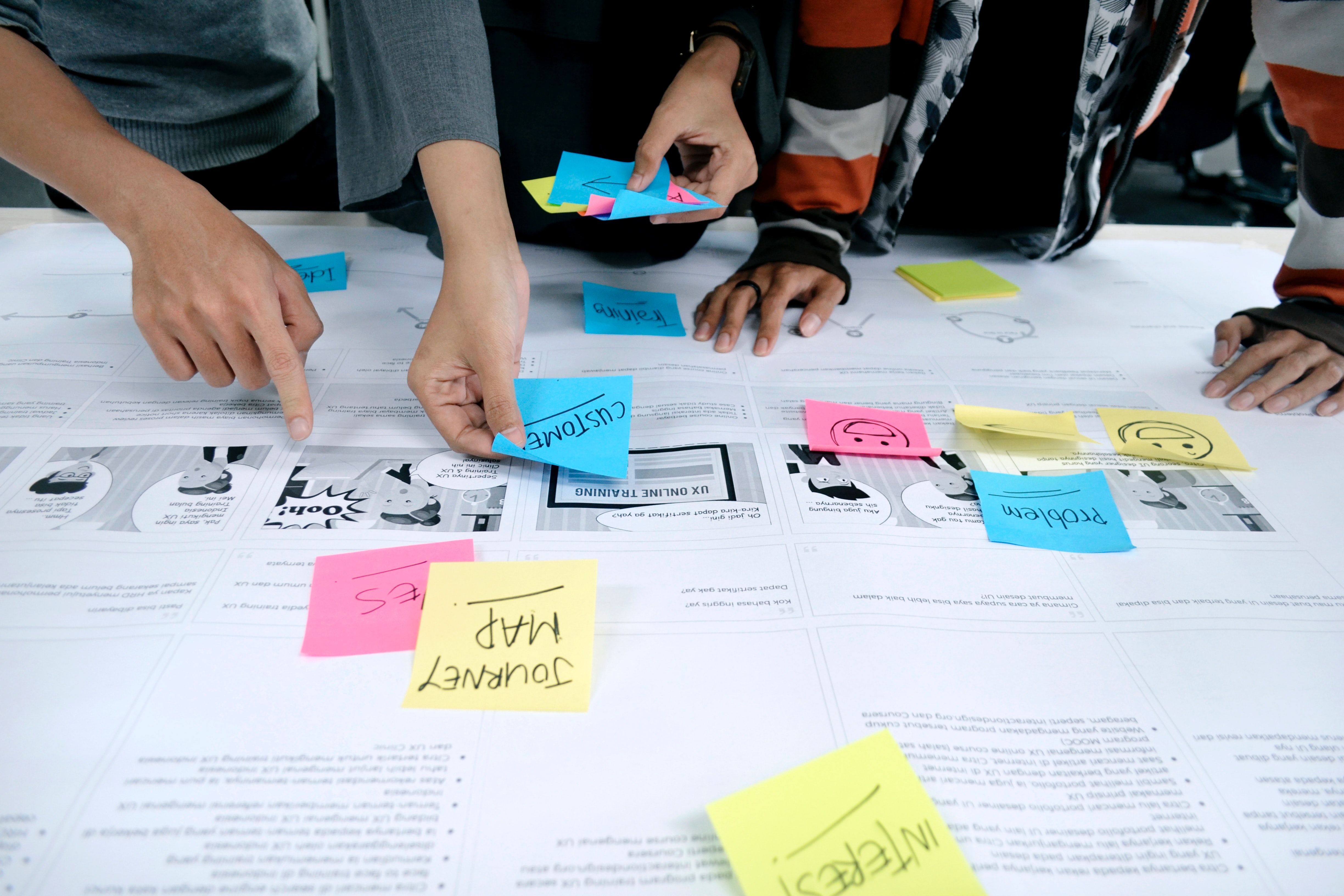Blog
The 5 Customer Journey Stages: Use Mapping to Build a Great User Experience



Want to delight your customers on every step of their journey with your product or service?
You need to start by mapping out that journey to get the full picture.
Journey mapping is essential to the overall user experience (UX)—and UX is invaluable to every company owner who wants to grow their business.
In this article, we’ll talk you through the five customer journey stages and explain customer mapping’s role in turning a prospect into an advocate for your brand.
Let’s begin with the customer journey.
The five customer journey stages
There are five distinct stages to the customer journey and it’s essential that you understand each of them.
1. Discovery
The customer journey begins with discovery or awareness. As consumers, we’ve all done it. Before buying a product, we begin a discovery or research stage. From the consumers’ point of view, this usually means looking for items that:
- Solve their problems
- Meet their various needs
- Offer quality and value
However, the discovery stage doesn’t just involve the consumer. You must ensure that the prospect finds you. On your part, that means:
- Sending messaging that resonates
- Finding out where your shoppers are (e.g., should you post on social media or advertise on Google?)
- Understanding where to find likely customers and targeting them
2. Consideration and evaluation
Once your potential customer has narrowed down a selection of vendors, they’ll move on to evaluating and comparing the different offers. Your consumers will approach this in various ways, including:
- Looking through social media
- Reading online reviews
- Comparing prices and features
As above, it’s not just up to consumers. You have your part to play here, too. How can you make a prospect more likely to become a customer? You could:
- Emphasize your added value
- Detail your product’s ease of use
- Explain the advantages of choosing your product
- Highlight your differences (such as efficient shipping service, an extended guarantee, or stellar customer service)
3. Purchase
After weighing the various products/services available, the consumer decides they want to purchase from you. Nevertheless, that doesn’t mean the buyer will complete the sale.
Cart abandonment is a more significant issue than you might realize. There are several reasons why a consumer may not complete checkout, like:
- High shipping costs
- Promotional codes not working
- Inadequate return policies, leading to a lack of customer trust
- Limited payment options
- A complex checkout system
Make sure you address these issues to boost your chances of making a sale and gaining a customer.
4. Building the customer relationship
Hopefully, your shopper completes their purchase. And if they do, now’s the time to start building the all-important customer relationship so they’re happy to buy from you again.
You can do this in several ways, such as:
- Sending follow up emails. Letting customers know you’re available to answer queries can encourage consumer retention.
- Providing related content. Giving tips on how to get the most of their product or promoting marketing-related products and accessories can work well here.
- Offering a small discount if your shopper signs up for a newsletter.
- Responding positively to feedback, even if it’s negative—that’s your chance to turn things around.
- Creating surveys to hear about customer’s experience and gain valuable data.
5. Advocacy
The tips above should go a long way towards building customer loyalty. Now, you’ll want to focus on turning your repeat buyers into advocates. If this sounds like a challenge, it needn’t be. You can introduce simple measures like:
- rewarding your customers for referring others.
- delivering a superior customer experience.
- using personalization.
- encouraging user-related content through contests or social media.
Now that you know the five key customer journey stages, how do you meet (or exceed) your consumers’ needs along the way? Through customer journey mapping.
Understanding customer journey mapping
What are the benefits of customer journey mapping, you ask? Well, creating a customer journey map allows you to identify problems, implement solutions, and provide your customers with the best UX possible.
Not sure where to start? Below we’ve outlined some steps that will help you create a customer journey map.
How to create a customer journey map
1. Figure out your buyer personas. Dig deep to figure out the details of who your target customer is and what they want to achieve.
2. Identify your buyer’s touchpoints. This may be through your website, via Google, through newsletters, or other outreach campaigns—all the places your customer can engage with your business. Knowing this will help you figure out the actions your customers are performing (or not performing). You can use your analytics software for this part.
3. Identify your customers’ main pain points—what do they need you to fix in their interaction with your business? For example, this could be limited payment options or a complex checkout service, as we discussed above.
4. Address the pain points and offer better solutions. In other words, once you know what’s wrong, fix it.
5. Update and adjust regularly. Your customer journey map isn’t static; keep assessing, reprioritizing, and improving as needed.
Optimize every stage of the customer journey for great UX
You cannot underestimate the importance of the overall user experience.
By understanding the customer journey and utilizing customer mapping, you can make the entire journey seamless for your prospects.
And the smoother the journey is, the more likely you are to attract loyal consumers who are happy to tell others about your brand.
Want to discover how to take your business to the next level? A Strategy Workshop could help you achieve just that. To find out more, visit our website today.